Currently, the trendy buzzphrase in the architectural word is “Green Design.” This is basically defined as a philosophy of creating buildings that minimize negative environmental impact. This is accomplished by efficiency and moderation in the use of materials, energy, and development space.
When asked if we practice this concept of design, I respond “If you build something classic and of quality that eschews trends and fads, it will stand the test of time.” Therefore, future generations will always seek out these types of structures to obtain, maintain and love. This develops what Bobby Mcalpine calls “the inheritable house.” In other words, a philosophy such as this results in buildings that don’t have to be discarded or constantly face-lifted so as to not appear dated. Designing beyond the end of your nose…how much more “green” can you get? That’s why I usually cringe when asked “What’s the hottest thing in design right now?” Gratefully, I have no idea.
Another way we practice our own special version of “Green Design” is by repurposing vintage architectural artifacts, often in ways in which they were not originally intended. Scores of antique buildings are being demolished everyday in our throw-away society. Why not salvage and reuse elements and materials regularly? In a culture that consistently worships the young and new, I’m here to herald and celebrate the aged!
But let me give you a few examples where we purposefully invited choice elders to the dinner table:
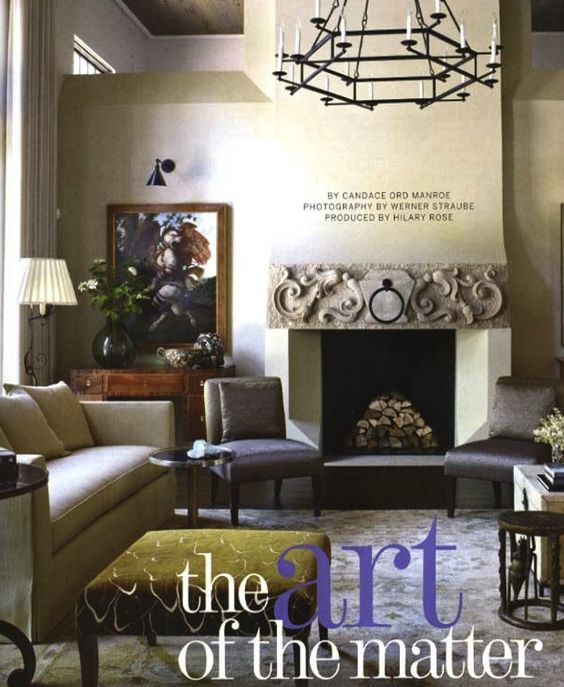
At times we are faced with tearing down existing house. Usually, this is due to it being irreparably outdated or decrepit. Faced with doing so, we try to maintain some sense of memory of what came before. A carved stone lintel that once graced the entrance door of a demolished house found its way onto the fireplace of this new salon.
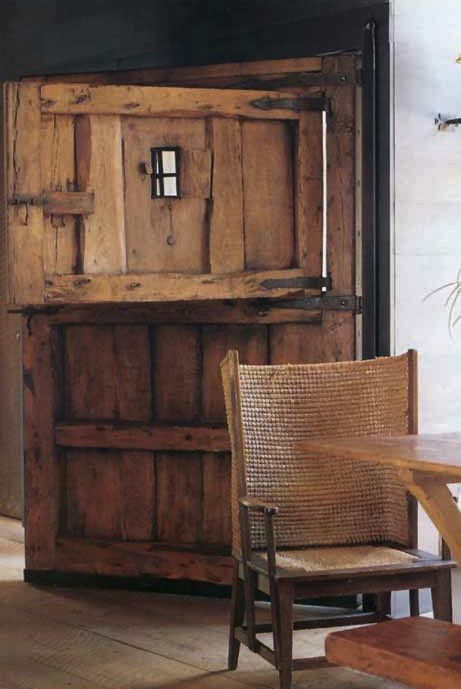
A ravaged wooden door became the main entrance to this rustic lake house. Obviously, our clients were much more concerned with beauty than weatherstripping. Second homes are the perfect place to ease up a bit on practicality.
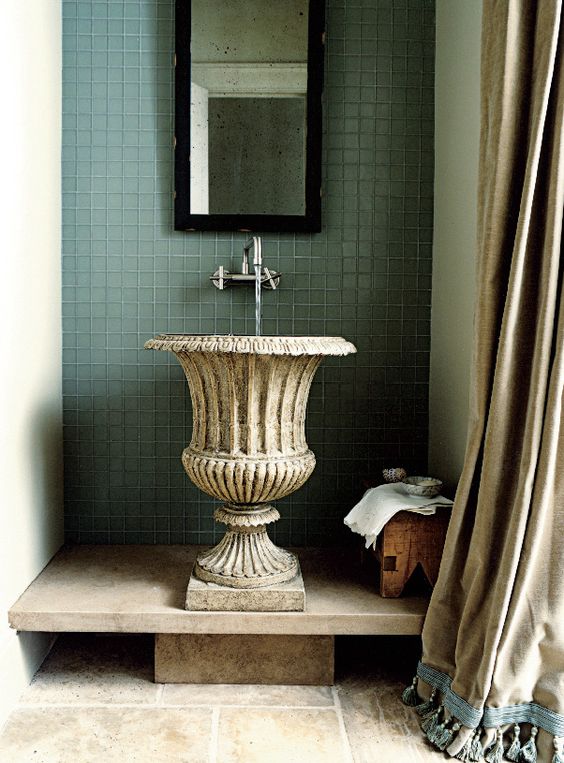
A weathered garden urn gracefully catches water in this dramatic powder room.
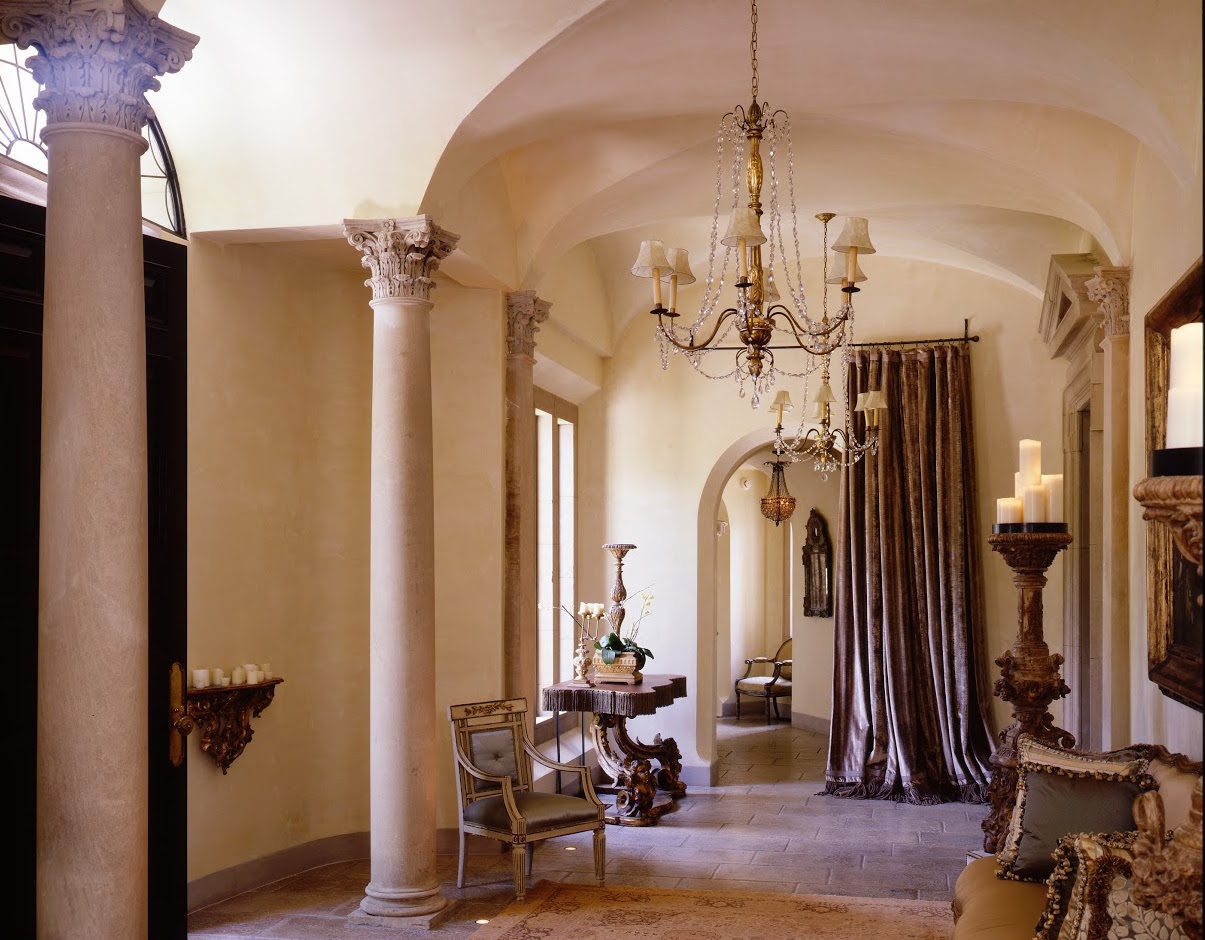
We purchased these stone columns and pilasters, salvaged from an English estate, and actually designed the house around them.
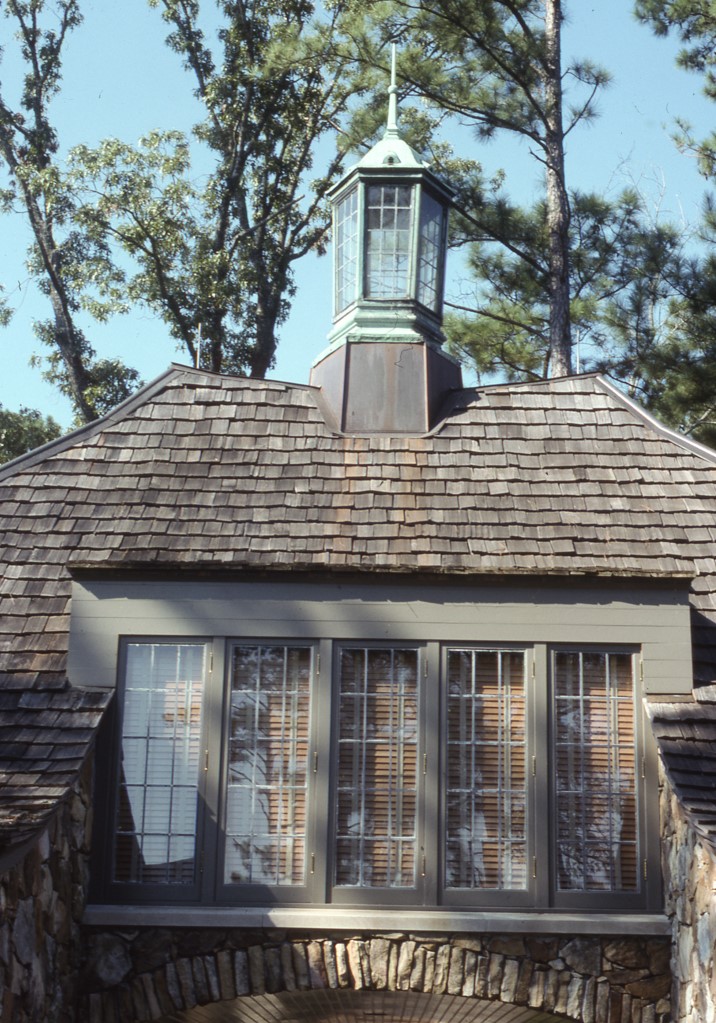
Here, a timeworn copper cupola we came across in a New York shop tops the roof of a boathouse.
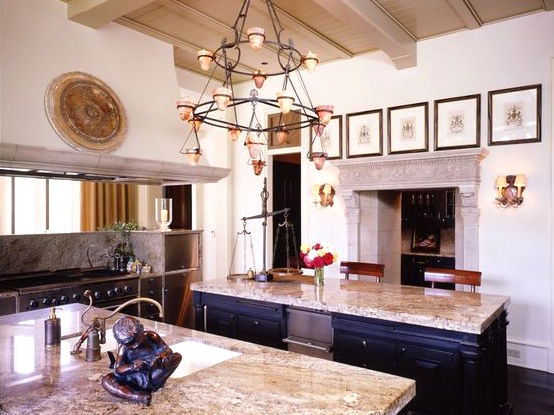
We used this ancient Italian mantel – not to front a fireplace as you’d expect – but as a fanciful entrance to a pantry in this elegant kitchen.

On this Utah estate, we actually re-purposed an entire building. Our client came to us in possession of a steel conservatory that was imported from India. We suggested he locate it at the end of the swimming pool and use it as an outdoor dining room. A pair of antique crystal chandeliers taken from the Utah governor’s mansion added the touch of glamor this glassy campaign tent required.
Greg Tankersley,
for McALPINE
All Content on this Site is the Property of McALPINE
Copyright © 2025 McALPINE
All Rights Reserved Worldwide.

Oh, if only all architects and designers utilized existing classic pieces from homes or buildings about to be torn down. I love each of the examples you’ve shared.
Thank you for always providing the world with beauty through your great architectural design work.
Karen
Ooooh that pantry entrance! I would waste my days leaning, loitering in the doorway….
Great post and great examples of timeless design.
Lovely post~thanks for posting….
This subject could spawn a fabulous book! My creative juices are flowing. Thanks for another inspiring article.
Every logical person would be on board with this, given the luxury of time, resources and funds to do so. It’s like promoting organic farming and sustainable agriculture. Of course! But why isn’t it everywhere we turn?